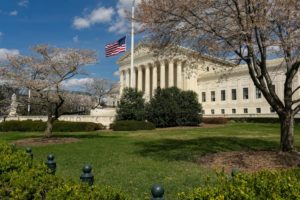
President Trump fired two Democratic commissioners, Alvaro Bedoya and Rebecca Slaughter, from the Federal Trade Commission, a move that reflects his broader effort to assert control over administrative agencies and reshape the federal government.
Trump’s firing has mainly come under question due to the 110-year-old precedential case of Humphrey’s Executor v. United States. The Supreme Court in this case ruled that the president cannot fire an FTC Commissioner unless the president finds “good cause” such as malfeasance or neglect of duties. Under this rule, FTC commissioners cannot be removed at will, making President Trump’s actions a direct contradiction to the case’s established protections.
However, succeeding cases seemingly put the main holding in Humphrey’s Executor at risk of being overruled. The Court’s ruling in Seila Law v. CFPB indicated that there may be an exception to the Humphrey ruling in holding that it is unconstitutional for an administrative agency to be headed by a single director not removable by the president at will. Many point to the distinction that in Seila Law, the agency in question was headed by one director whereas the FTC has multiple commissioners.
This is not the first time that President Trump has called Humphrey’s Executor into question. In February, the Trump administration fired former National Labor Relations Board member Gwynne Wilcox and Hampton Dellinger from the Office of Special Counsel. However, a District Court reversed the firings under the principles set out by Humphrey’s Executor. Although the court did rule against President Trump, his administration appealed the ruling which will most likely end up in the Supreme Court’s hands for a final decision.
Trump’s Firings Elicited Both Criticism and Support
Bedoya and Slaughter announced that they will challenge this termination as they claim it goes beyond the President’s executive authority to remove officers. “I woke up this morning, as I have every day for nearly the last seven years, eager to get to work on behalf of the American people to make the economy more honest and fair,” Slaughter said in a statement. “But today the president illegally fired me from my position as a Federal Trade Commissioner, violating the plain language of a statute and clear Supreme Court precedent. Why? Because I have a voice. And he is afraid of what I’ll tell the American people.”
Although President Trump’s action draw controversy, many view Humphrey’s Executor as wrongly decided on the basis that it goes against constitutional principles that grant the president broad control over the government. “President Trump has the lawful authority to manage personnel within the executive branch,” White House spokesperson Taylor Rogers said. “President Trump will continue to rid the federal government of bad actors unaligned with his common-sense agenda the American people decisively voted for.”
FTC Chair Andrew Ferguson adding onto the support of President Trump’s firings stated that he has “no doubts about Trump’s constitutional authority to remove Commissioners, which is necessary to ensure democratic accountability.”
Ultimately, President Trump’s firings challenges a major Supreme Court decision, an action that rightfully invites both criticism and support. While these firings will certainly face legal challenge and end up in a district court, the issue is likely to reach the Supreme Court, which may ultimately decide whether to overturn the landmark case of Humphrey’s Executor. ![]()
Jacob Horowitz is a contributing editor at Compliance Chief 360°

